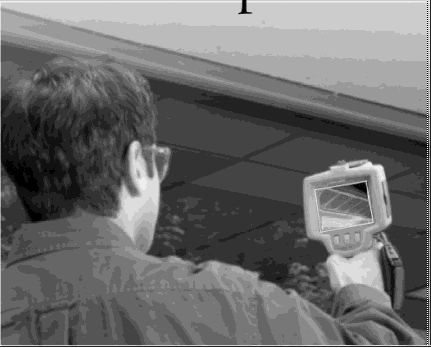 After a flood it is not enough to only remove wet carpeting, furniture and padding. To prevent mold growth, wet drywall should be removed at least 12 inches above the area that has been exposed to floodwater and then taken out of the building.
After a flood it is not enough to only remove wet carpeting, furniture and padding. To prevent mold growth, wet drywall should be removed at least 12 inches above the area that has been exposed to floodwater and then taken out of the building.
It’s essential to dry out the structural supports of a home with dehumidifiers or heat-inducing fans, and then clean the affected areas with disinfectants and bleach. Be aware that the act of cleaning up the mold will stir mold particles into the air and can affect readings. Vacuuming and filtration can help amend this.
The moisture content in floor joists and wall studs should be below 14 percent and can be checked with a moisture meter. At fiber saturation the moisture content of wood is 28 percent.
Moisture detectors provide moisture spot checks inside the homes. This can help find mold behind the walls, ceiling, or crawlspace.

Ten Things You Should Know About Mold
The EPA says that here is no practical way to eliminate all mold and mold spores in the indoor environment; the way to control indoor mold growth is to control moisture.
- If mold is a problem in your home or school, you must clean up the mold and eliminate sources of moisture.
- Fix the source of the water problem or leak to prevent mold growth.
- Reduce indoor humidity (to 30-60%) to decrease mold growth by: venting bathrooms, dryers, and other moisture-generating sources to the outside; using air conditioners and de-humidifiers; increasing ventilation; and using exhaust fans whenever cooking, dishwashing, and cleaning.
- Clean and dry any damp or wet building materials and furnishings within 24-48 hours to prevent mold growth.
- Clean mold off hard surfaces with water and detergent, and dry completely. Absorbent materials such as ceiling tiles, that are moldy, may need to be replaced.
- Prevent condensation: Reduce the potential for condensation on cold surfaces (i.e., windows, piping, exterior walls, roof, or floors) by adding insulation.
- In areas where there is a perpetual moisture problem, do not install carpeting (i.e., by drinking fountains, by classroom sinks, or on concrete floors with leaks or frequent condensation).
- Molds can be found almost anywhere; they can grow on virtually any substance, providing moisture is present. There are molds that can grow on wood, paper, carpet, and foods.
src: http://www.epa.gov/mold/moldresources.html

If you’re in California, you might want to give us a call and see about getting an assessment from Byebyemold.